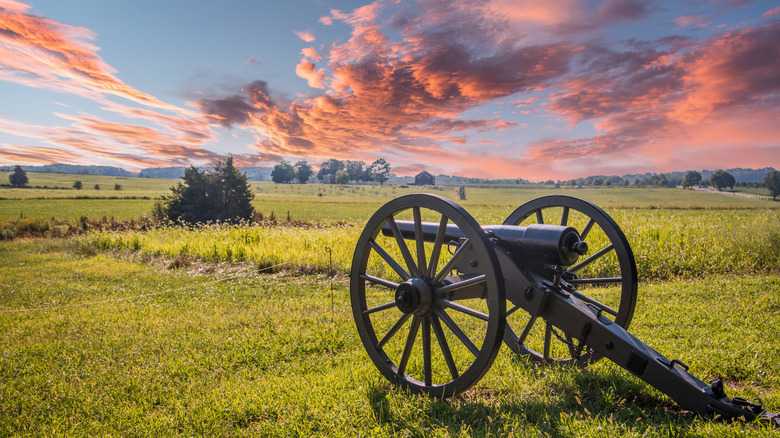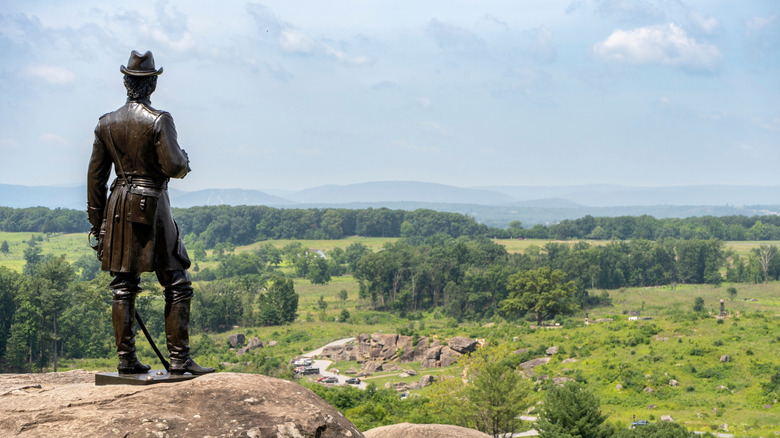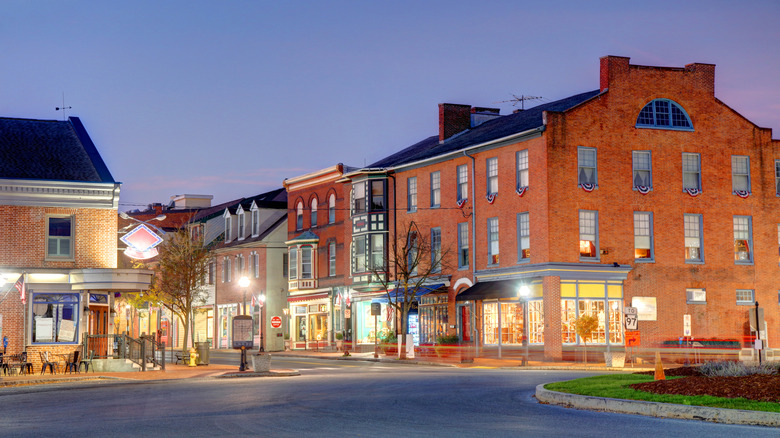Pennsylvania Is Home To One Of America's Most-Visited Destinations Where A Bloody Battle Took Place
In southeast Pennsylvania, all roads lead to Gettysburg. For the first 100 years of its existence — since Samuel Gettys opened a tavern on the east-west road to York — these road and rail links turned Gettysburg into a regional hub, 150 miles northeast of Pennsylvania's Pocono Mountains and the state's highest waterfall. In the summer of 1863, the turnpikes saw more than 150,000 Union and Confederate troops converging to fight not just the largest battle of the war, but the largest ever in the Western Hemisphere. For the first three days of July 1863, the slaughter filled the streets, farms, fields, and forests in and around the town, forever changing it. As Abraham Lincoln noted in his Gettysburg Address, soon after, "The world will little note, nor long remember what we say here, but it can never forget what they did here."
And Gettysburg has not forgotten, preserving the history and retelling the story for the 740,000-plus annual visitors — in the battlefields, museums, monuments, historic homes and buildings, cemetery and memorials, and streets themselves. These tales are told from all perspectives, be it the soldiers that fought there or the townsfolk who endured the wholesale death and destruction literally on their doorsteps and even inside their homes, some of which still bear the scars. This also makes Gettysburg one of Pennsylvania's top destinations. There's a lot to see, as well, and matching the three days of the battle with a three-day visit is a good way to fully experience and appreciate the highlights.
Touring the Gettysburg Battlefield
Gettysburg National Military Park covers 5,700 acres, which can translate to miles of hiking on an experience all by foot. However, car, bus, and bike routes are available, too, and, practically speaking, a combo-approach is best. Start on the western edge of town at the Seminary Ridge Museum & Education Center. Not only did this serve as the front line on the first day, its halls became a hospital for the wounded. The fields outside saw the Confederate arrival and the desperate — and ultimately unsuccessful struggle — to keep them at bay. Numerous monuments mark key moments in the fight and the soldiers involved, and the Eternal Light Peace Memorial, dedicated by President Franklin D. Roosevelt on the 75th Anniversary, pays tribute to a "peace eternal in a nation reunited."
The more famous battles of days two and three took place south of the town, along the Federals' famous fishhook line, facing west. Start at the rocky and hilly south end, where desperate fighting raged across now famous locations like Little Round Top, Devil's Den, the Wheatfield, and the Peach Orchard. The action here was particularly chaotic, so a guide — by app or human — is essential. Same goes for the day-two fighting at the steep and wooded Culp's Hill, on the north side of the hook. In the center, the open fields between Seminary Ridge and Cemetery Ridge saw the main event of day three, Pickett's Charge. Visitors can even cross them on foot as the Confederate soldiers did on their way to defeat.
Visiting battle sites in Gettysburg outside of the famous field
The town of Gettysburg became a battlefield itself, leaving marks still visible today. Fortunately, preservation has kept it much the same as 162 years ago, although many homes have been transformed into small museums related to the battle. Beyond the Battle Museum presents the war and battle from the citizens' eyes, while the Jennie Wade House tells the story of the only civilian killed in the battle. It even includes the bullet hole in the door that did the deed and a floorboard stained with her blood. Another is the Shriver House, which became a sharpshooter's nest during the battle. Just steps away is Gettysburg National Cemetery, where Lincoln spoke his famous address over the graves of thousands of soldiers.
South of the cemetery is the main museum of the battle, Gettysburg National Military Park Museum & Visitor Center. Inside, exhibits, artifacts, and multimedia offer a comprehensive overview of the battle that makes a good starting point for those less familiar with it. The museum is also home to the Gettysburg Cyclorama, which recreates the action across a massive, 360-degree canvas 42 feet high and 377 feet long. The immersion is further enhanced by a landscaped foreground section populated with mannequins of soldiers. The visitor center is also a good place to sign up for car and bus tours of the battlefield. Discover more Civil War stories at this Civil War Fortress Overlooking North Carolina's Coast, and this national historical park that's a thrilling destination for Civil War buffs.


